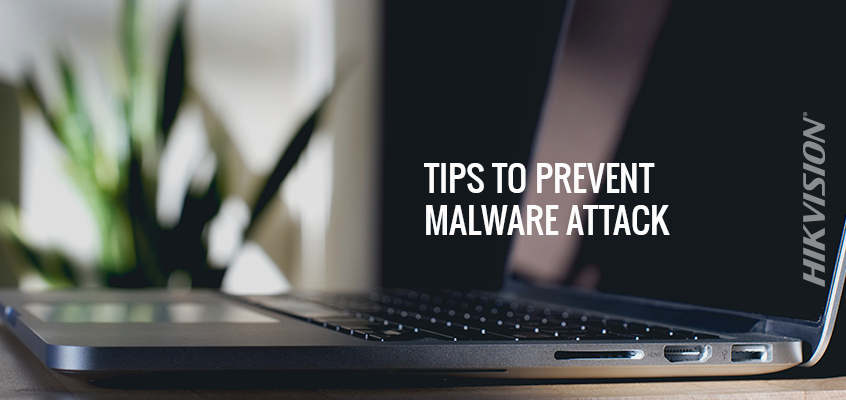Hikvision Cybersecurity Director Offers Top Five Tips on How to Prevent Malware, Cyberattacks
 Hikvision Cybersecurity Director Discusses Ways to Prevent Malware, Reduce System Vulnerabilities
Hikvision Cybersecurity Director Discusses Ways to Prevent Malware, Reduce System Vulnerabilities
Hikvision’s director of cybersecurity, Chuck Davis, offers insights into reducing vulnerabilities for one of today’s greatest cybersecurity threats, malicious software, commonly known as malware.
According to Davis, malware is one of the most often used components in cyberattacks. “Two of the most prevalent attack methods are, network scanning and phishing. A typical network scanning attack occurs when a system scans a network (frequently the Internet) looking for vulnerable systems. When it finds one, it will exploit the vulnerability and infect the system with malware. Often, the infected system will begin scanning and infecting systems as well.
The second popular attack method is phishing. This is tricking someone into installing malware on their system or divulging information such as login credentials, and then infecting a system. Once the system is infected, it can be used as part of a large botnet attack (using thousands of infected systems to attack an entity on the Internet), crypto-currency mining, or it can be used to pivot on that local network and find other systems to attack,” said Davis.
Top Five Tips to Prevent Malware Attacks
Here, Davis offers tips to reduce vulnerabilities and prevent malware attacks:
- Use firewalls and firebreaks (network segmentation): Place devices behind firewalls to protect them from untrusted networks, such as the Internet. And, use network segmentation—splitting a network into separate networks that are isolated, not connected—so a compromise in one part of the network won’t compromise the other (i.e. human resources and finance). This works much like a firebreak, which is a strip of land in a wooded area or forest where the trees have been removed to prevent a fire from spreading.
- Protect your computer from vulnerabilities: Clean up your computer by removing old software programs no longer in use, and make sure to install patches regularly. Updating firmware safeguards equipment by patching known vulnerabilities often adds features and sometimes will improve system performance. Hikvision provides firmware update information on its website.
- Reset default passwords and use complex passwords: Users should be required to change any default passwords to a strong password with at least eight characters, and at least one of each of the following: numbers, special characters, and uppercase and lowercase letters. Ideally, your password should be at least 12 characters and not used anywhere else. To manage all your complex, unique passwords, use a password manager. They not only store all your passwords but will help you create great passwords that you never have to remember.
- Manage your router: Earlier this year, the FBI recommended that everyone reboot all home routers and small office routers. In a previous blog on the subject, Davis stated that “rebooting will disable the active malware called “VPNFilter" which has infected hundreds of thousands of routers across the Internet, and it will help the FBI assess the extent of the infection.” While this was an isolated incident in time, it was a good example of why we need to actively manage and patch our routers Click here for more tips on how to set up your router.
- Run active scans and updates: When a computer notifies you of an available update, run it immediately. In addition, you can actively run malware and vulnerability scans for network devices. If you do get infected with malware, backup your data and re-install the operating system.
In a recent video interview with Campus Safety magazine from April 23, 2018, Davis discussed the Internet of Things (IoT) and risk of cybersecurity breaches: “Video surveillance systems … are actually computers. So we tend to forget that all of these devices that we’re connecting to our IP networks, [which are] ... adding all this great functionality to allow us to remotely monitor or control them, are actually computers. They have operating systems and they will have vulnerabilities. And so if we don’t take our proper due diligence and protect those things and really apply cybersecurity best practices, we put them at risk of being attacked …”
For additional insights from Hikvision’s cybersecurity director on ways to reduce security concerns, eliminate vulnerabilities, and prevent malware attacks, click here.
